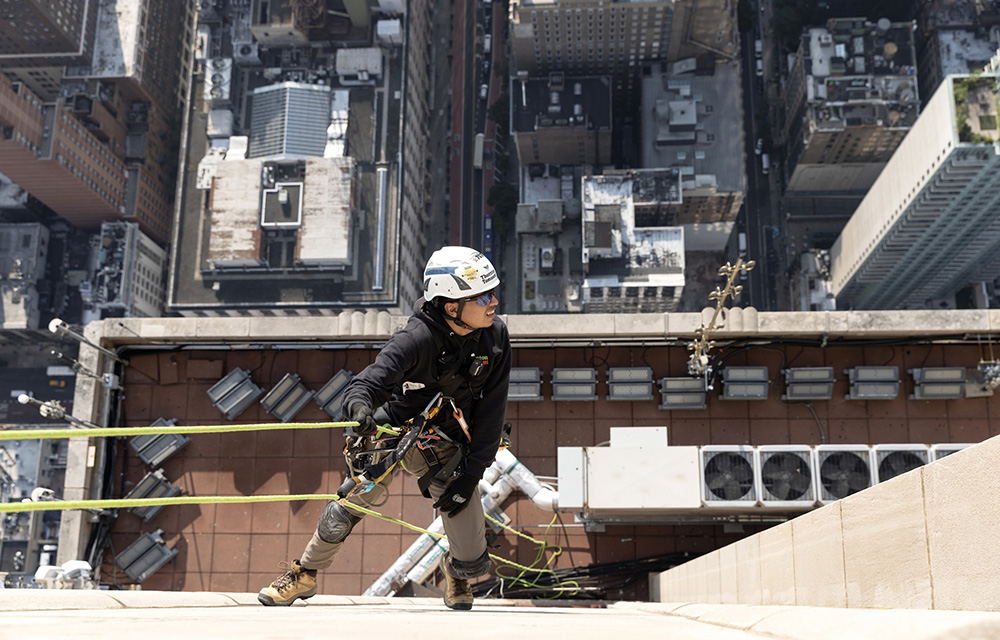My neighbor was robbed – The four tips to follow so that it does not happen again - by Doug Haines

Haines Security Solutions
My neighbor is a widow. Her husband passed away a few years ago and now her son, who works during the day, lives with her. A couple of weeks ago, in the middle of the day, while she was in the shower someone opened her front door and robbed her house. They took the flat screen from the living room, her purse with all her credits cards and personal documents. Thank goodness they didn’t bother her. I’m pretty sure they could hear that she was in the shower.
Once out of the shower and noticing her house was in a mess, she called the cops. They responded, looked for signs of forced entry, interviewed her and canvassed the neighborhood looking for anyone having a surveillance system. Fortunately, several of us on our street were able to provide this footage to the cops. Based on her description of a window cleaning crew that had cleaned her windows the week before and the surveillance videos we have a pretty good idea who was behind the robbery.
Yeah – lights, camera, action, jail!
She now wants to buy a home alarm system. “Kind of like closing the door after the horse got out,” I’m thinking, but nonetheless probably warranted – better late than never, as they say.
First rule, security must be in place before the event happens. Sounds like a “no brainer” right? I can’t tell you how many people have told me I’ll get an alarm system when I need one. That said, I’m not so sure a standard system would have prevented the robbery from happening in the first place. Think about it, most security systems are designed to provide protection when you are not at home. They are not designed to protect you while the premises are occupied.
The standard surveillance system is made up of sensors (usually motion sensors, such as, balance magnetic switches or passive infrared sensors that detect movement) and some type of closed circuit television cameras (CCTV). This combination is necessary. A sensor can fail for a variety of reasons just like a camera can but the likelihood of both cameras and sensors failing at the same time is almost non-existent. Most alarm companies will sell you a bundled system; i.e., surveillance, intrusion detection and monitoring. A couple of things to remember, ask the salesman, where and for how long the data is stored, how can you retrieve it and what happens when the power supply fails. Also ask about the parameters for response; when they will respond, who they is and what can you expect when they do show up. Many new systems allow you to monitor your system directly from your iPhone But beware they also have their limitations. I laugh when I see the commercial where the lady tells the perps to get off her lawn. Remember a dedicated threat is not deterred, they will go around to the side or rear of the house to break in.
So second rule, make sure your plan is holistic and comprehensive.
I saw an ad yesterday evening that said the alarm company would dispatch the police. I’m skeptical, police departments usually only respond if they can verify the perpetrator is still on site and someone is being threatened; otherwise, they’ll come to collect evidence or may even require you to report to the station to file a complaint.
Third rule, design your mitigation strategy for the threat at hand. In her case, protection while in the home. She could have installed a system that included motion sensors on the windows and doors that would have allowed her to “set” the sensors on the windows and doors – the perimeter, and still allowed freedom of movement from room to room within the interior. Since she is also hearing impaired she would need a strobe light or some other visual feature that would warn her that the perimeter had been breached.
And finally rule four, not all threats can be mitigated. It really is about risk management. The question to ask is, “Have I reduced my risks down to a level I’m comfortable with?” If the answer is, “yes,” then good. If the answer is, “no,” then keep trying until no turns into a yes.
Doug Haines, MPSE, is owner/CEO of Haines Security Solutions, Ventura, Calif.
NYC mayor and DOB release comprehensive façade inspection and safety study conducted by Thornton Tomasetti








.gif)
.jpg)
.gif)
.gif)